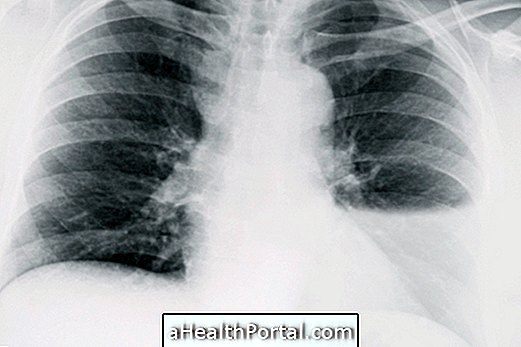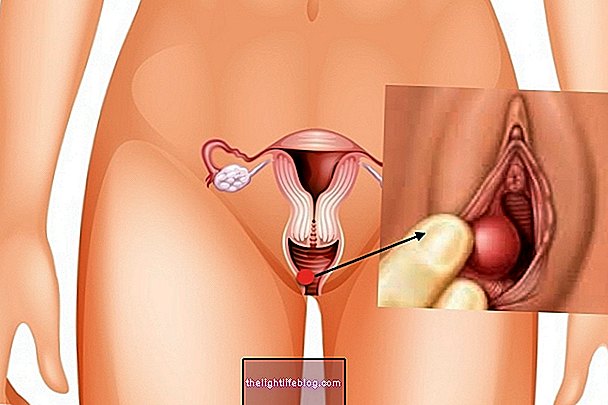Some signs, such as pain in the uterus, yellow discharge, itching or pain during intercourse may indicate changes in the uterus, such as cervicitis, polyps, or fibroids.
Although, in most cases, these signs only indicate slight problems, such as inflammation of the uterus or ovaries, they can also be a sign of more serious diseases such as cancer. That way, whenever any alteration is identified, it is important to go to the gynecologist to identify the cause and start the appropriate treatment, which may include the use of ointments, medicines and even surgery.

Signs that the uterus may be sick
The main signs and symptoms of changes in the uterus include:
- Constant discharge, which may be white, yellow, green or brown in color and may smell strongly.
- Colic and bleeding outside the menstrual period or absence of menstruation;
- Pain and feeling of pressure in the belly, especially in the region that goes from the navel to the pubic area;
- Pain during intimate contact or shortly after intercourse;
- Itching, redness, and swelling in the vagina;
- Increased abdomen volume and sometimes back pain associated;
- Constant urge to urinate;
These signs and symptoms, if not treated properly can lead to infertility or ectopic pregnancy, so it is important to go to the gynecologist if the symptoms do not disappear in 1 week. See the top causes and treatments for Infertility in women.
What can cause pain in the uterus
Pain in the uterus is usually caused by an inflammation in the area and is therefore more frequent during menstruation when the walls of the uterus are changing and you may also feel a swollen uterus, for example.
However, pain in the uterus can also be caused by changes that need to be treated, such as bacterial infections or endometriosis, for example. So if the pain arises out of the menstrual period and if it takes more than 3 days to improve it is advised to go to the gynecologist.
On the other hand, cases of cancer of the cervix usually do not present pain, developing without any type of symptom. It is always best to have pap smears checked in order to identify the first signs of cancer and start treatment. See when the pap smear should be done.
Common Uterine Diseases
The seven signs indicated above can be an important warning to prevent the evolution of diseases, such as:
- Cervicitis: is an inflammation of the cervix caused by microorganisms;
- Adenomyosis: is a disease characterized by the presence of glands and endometrial tissue that increases the size of the uterus; Here's how to do the treatment: How to treat adenomyosis.
- Myoma: are benign cell changes in the uterus, which causes the uterus to grow;
- Uterine polyp: is the excessive growth of cells in the inner wall of the uterus, forming cilia-like "balls";
- Cervical cancer: Also known as cervical cancer, it is caused by the infection caused by the HPV virus. Get to know the symptoms in: Symptoms of cervical cancer.
The symptoms of the different diseases of the uterus are similar and only the genecologist will be able to treat the disease correctly and therefore one should go to the doctor so that this one can diagnose the problem.

Exams that help identify the problem
Generally, to make the accurate diagnosis of the womb disease of the woman, the doctor has to make tests to observe the uterus, vagina and vulva and, the main exams include;
- Vaginal touch: The doctor inserts two gloved fingers into the woman's vagina and at the same time places the other hand on the abdomen to evaluate the organs of the reproductive system for the diagnosis of endometriosis and pelvic inflammatory disease.
- Specular examination: a speculum is inserted into the vagina to assess the presence of discharge or bleeding;
Papanicolou test: also known as oncotic cytology, is an examination used to detect the presence of cancer of the uterus by inserting a speculum into the vagina and gently scraping the surface of the cervix to obtain cells for analysis. Here's how the test is done: How the pap smear is done.
In addition to these tests, your doctor may recommend doing an ultrasound or an MRI, as described by the woman's symptoms, and in most cases, invasive tests should only be done from the beginning of sexual activity.
Uterine changes in pregnancy
During pregnancy there may be problems in the womb or just in the vagina and the symptoms are common to the woman who is not pregnant.
However, the treatment may be different since the pregnant woman can not take all the medicines. In this way, it is important to go to the doctor as soon as the first symptoms appear, such as yellow discharge or pain when urinating.






















